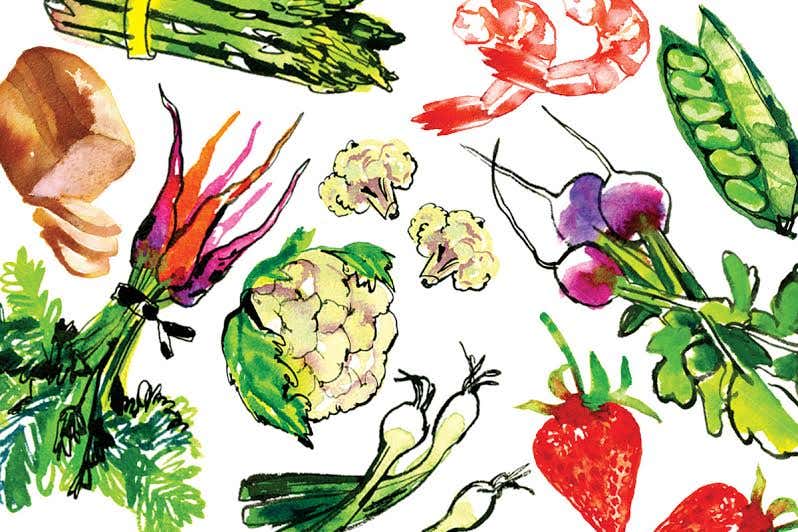
One Nation from Many
The highland regions west of the Great Rift Valley are the traditional home of the Amhara, who constitute roughly 30 percent of the country's 77 million people and whose Arabic-derived language is the lingua franca in much of the country. The Amhara are mostly Orthodox Christians who have developed a wide variety of complexly spiced vegetarian and meat wots, or stews, that make use of the huge array of foods that can be grown in the diverse climate zones encompassed by the Ethiopian highlands: from cereals and grains to types of kale and pulses such as split peas and lentils.
Members of the Gurage ethnic group, whose traditional homeland is located in the country's southwestern highlands, are descended from Ethiopia's original inhabitants. A majority of Gurage cultivate the staple crop called ensete, also known as false banana, whose root is shredded and fermented to make a flatbread called wesa. The Gurage often accompany that tough-textured and sharp-tasting bread with moist, rich-flavored accompaniments made with fresh cows' milk cheese, milk, and butter. Indeed, butter is considered a precious foodstuff by the Gurage, who often put it into coffee.
Constituting roughly 32 percent of Ethiopia's total population, the Oromo are the largest ethnic group in the country, though they are not among the region's original inhabitants, having invaded Ethiopia from neighboring Somalia in the 16th century. The group is concentrated in the highland regions in the central and southern parts of the country. The cultivation of such grains as tef, millet, and maize, which the Oromo often use instead of tef to make the flatbread injera, is a major source of livelihood among members of the group, who have assimilated the taste for the buttery, ginger-and-onion-infused meat dishes favored by their Amharic neighbors.
Like the Gurage, the Sidamo are predominant in the country's southern and southwestern highlands. They have a sophisticated agricultural tradition and are well known for the excellent variety of coffee they produce. The raising of livestock, primarily cattle, is also a source of livelihood for the Sidamo; a cattle-herding culture across much of Ethiopia's highland regions has given rise to perennially popular national dishes like kitfo, diced raw or slightly cooked beef seasoned with the spiced butter known as nit'r qibe.
The raising of livestock—specifically goats, sheep, and cattle—dominates the daily life of the mostly Muslim inhabitants of Ethiopia's arid, low-lying Somali region, in the far eastern part of the country, which includes the embattled Ogaden territory, over which Ethiopia and Somalia fought a war in 1977. Traditional Somali cookery favors simple dishes such as ambola, red beans mixed with rice and salt, and malawa, a pancake made with flour, sugar, oil, and eggs and sometimes served with honey.
Like the Amhara, the Tigray, who speak a Semitic language related to Amharic, are Orthodox Christians and so share many of the Amhara's dietary predilections—they make a wot-like stew called tsebhi and a version of injera made with wheat instead of tef. They are concentrated in Tigray Province, in the far north of the country.
Keep Reading
Continue to Next Story










